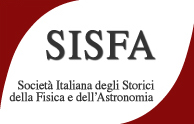Speaker
Description
In the eighteenth century, Naples played a pivotal role in the dissemination of Newtonian physics and the study of atmospheric electricity. A vibrant scientific community, including Della Torre, Bammacaro, Ardinghelli, and Poli, fostered experimentation and innovation. In a context of environmental vulnerability, conceptualized as South-risk, the city cultivated early forms of South-safety, anticipating protective urban strategies. This communication examines the installation of Naples’s first lightning rods as both a scientific and symbolic response to risk. British diplomat William Hamilton facilitated the transfer of knowledge and instruments, notably through the Italian translation of the pamphlet Chiare istruzioni per costruire ed innalzare sicuri conduttori (1794) by Felice Sabatelli. By making English theories on electrical conductors accessible to Italian audiences, the volume contributed to urban safety and a wider culture of risk awareness. Naples thus emerges as a laboratory of resilience, turning vulnerability into technological and cultural innovation.

